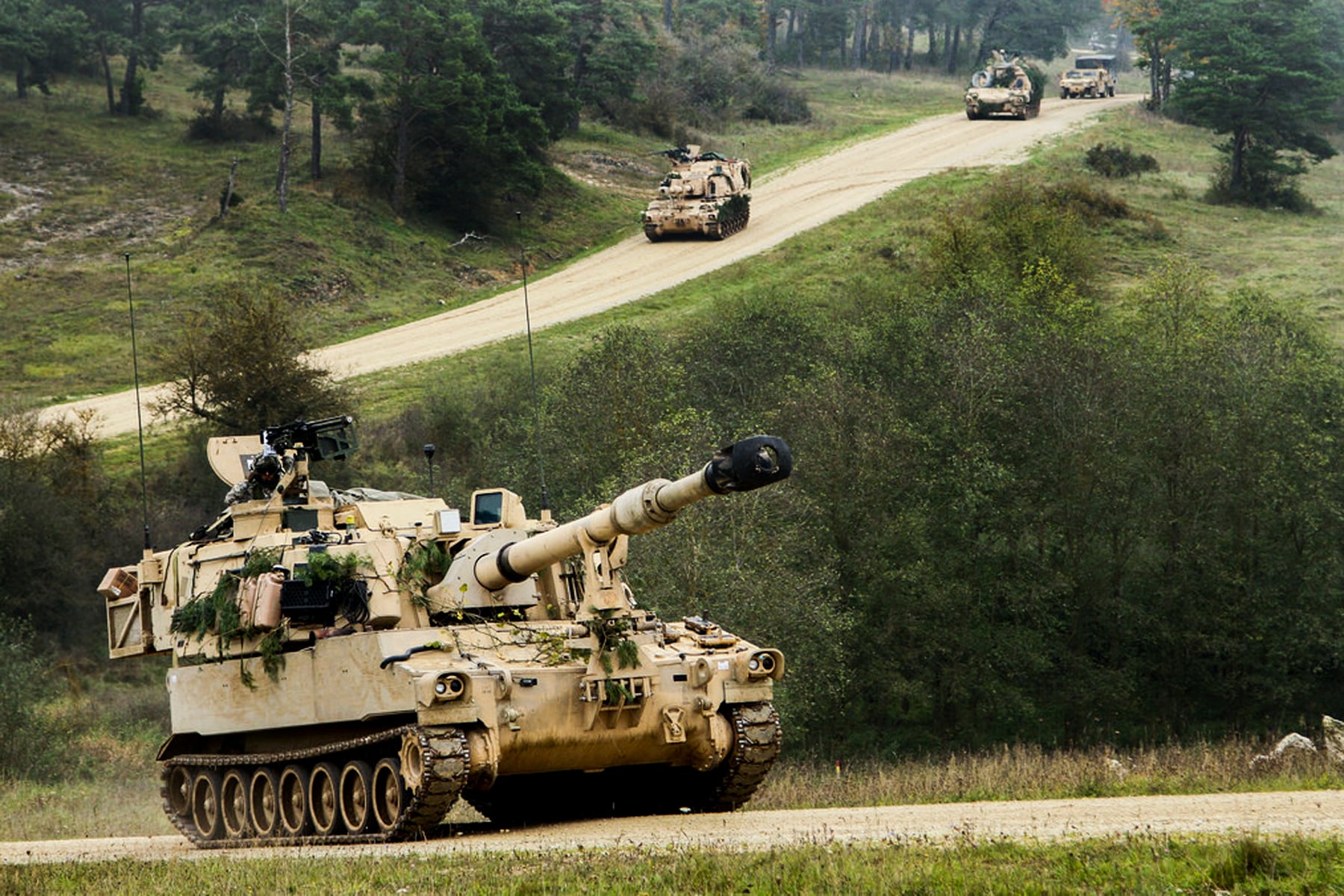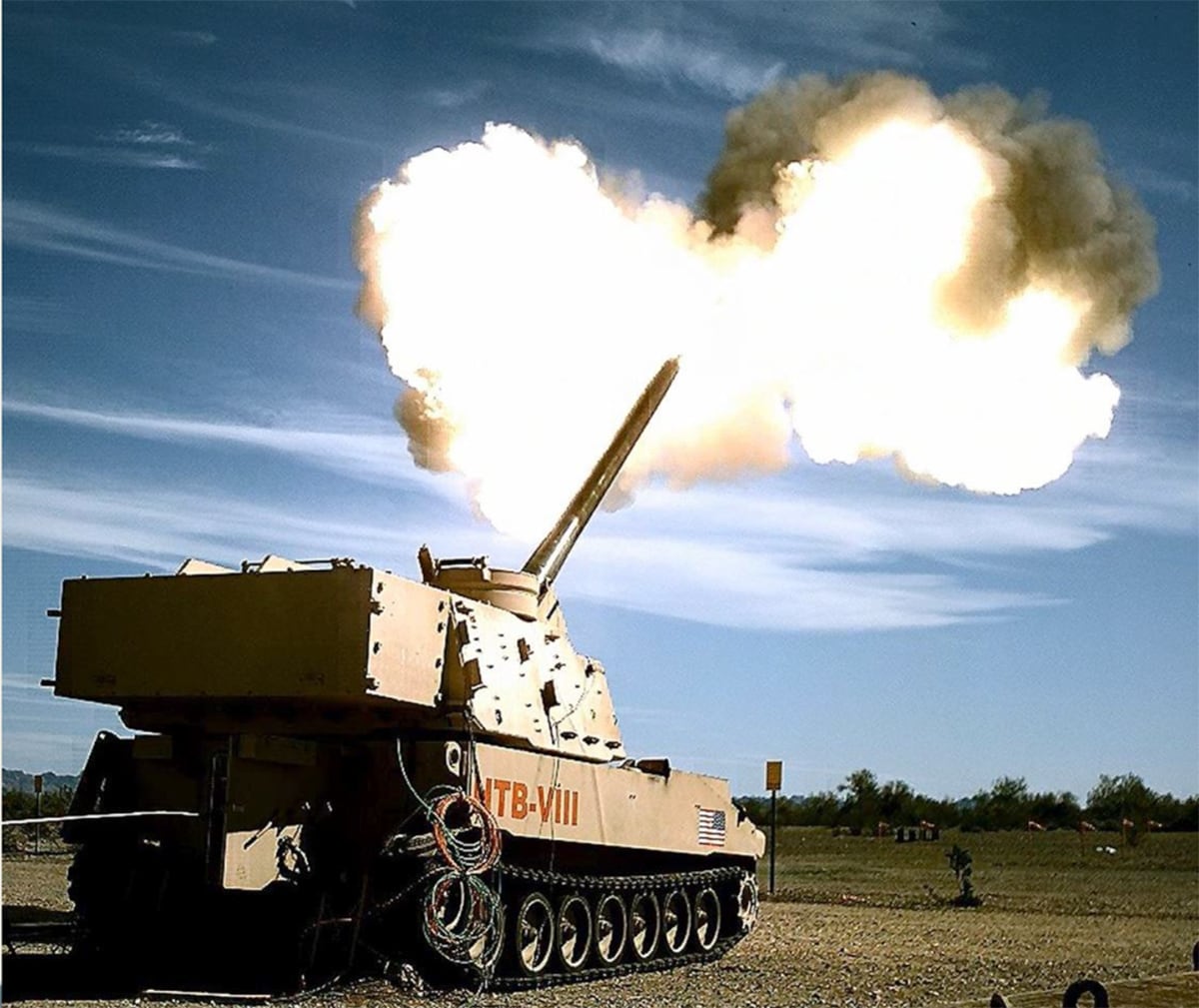LONDON — As the U.S. military and its European allies look to counter Russian capabilities observed against Ukraine in Crimea, countries are looking to move away from towed artillery systems to highly mobile mortar systems that pack a punch at greater range.
The exposition floor at DSEI, a large defense trade show in London, was littered with examples of mobile mortar systems that are answering the call.
“We’re seeing the emergence of mobile mortars now due to changing threats and environments,” James Tinsley, a managing director at Avascent, told Defense News at the show.
“Where U.S. and allied operations in Afghanistan and Iraq used largely static mortar and artillery emplacements at Forward Operating Bases, these sites are easily fixed, targeted and destroyed by more advanced conventional adversaries,” Tinsley said. “Those adversaries use unmanned aerial vehicles, electronic intelligence and counter-battery radars to quickly target and counter-fire on vulnerable artillery positions.”
Militaries have increased their focus on mobile artillery solutions, as a result, Tinsley said, to include self-propelled howitzer being recapitalized with new systems like the Paladin M1299 Extended Range Cannon Artillery, Hanwha’s K9, BAE Systems’ Archer 155mm howitzer to name a few. And there’s an effort to extend the range of rounds like the Nammo ramjet capability.
RELATED

Hammer of Thor
BAE Systems showcased its CV90 Mjölner variant — Hammer of Thor — with a 120mm mortar system, which is about to be delivered to the Swedish Army after completing qualifications.
The company is seeing a genuine requirement from customers because they are seeing the threat and so the company believes its system fits the bill due to its simplicity for the operator.
Swedish Armed Forces Colour Sergeant Joakim Kylstad, a development officer at the Land Warfare Centre, said the system brings an increase in mobility and speed of firing and it can keep up with main battle tanks. The ability to shoot and move out of the way before an enemy can detect and return fire is critical, he added.
And the 120mm’s firepower and range are more effective than an 81mm mortar, Kylstad said.
While this variant was specifically designed for the Swedish Army, there are a number of other countries interested in the platform, Dan Lindell, BAE Systems’ director of combat vehicles in Sweden, said.
The company has sent information on both the Mjölner variant and an advanced mortar system to the United States, but the two have very different price points, Lindell noted.

The vehicle was delivered in record time to the Swedes. BAE fired the first shot from the variant just two-and-a-half months after signing a contract in December two years ago.
BAE also brought its Archer system on an 8x8 truck. The system carries 21 rounds and can be fired in two-and-a-half minutes.
Also packing a punch, Finnish defense company Patria displayed a 120mm Nemo turret on its 6x6 armored wheeled vehicle.
While not integrated onto a vehicle at the show, German defense company Rheinmetall brought its 120mm Ragnarok mortar combat system intended for integration into combat vehicles.
Downsizing
But even smaller vehicles came to the show with mortar systems highlighting easy setup and high mobility.
AM General’s booth had one vehicle - a HMMWV with a Hawkeye 105mm mobile weapon system using a standard M20 cannon installed with a soft recoil capability.
The company has been working with Mandus Group on refining and integrating the Hawkeye system to the humvee. The only parts different from what is already in the U.S. Army inventory is the gun system’s cradle and the recoil mechanism, Nguyen Trinh, company executive vice president of International Defense, told Defense News.

The 105mm system can be found on Korean and South African vehicles, but it’s installed on huge 6x6 trucks. Yet, AM General installed the gun without making any modifications to the humvee besides adding stabilizer legs to adjust to uneven ground.
In a recent demonstration, an experienced artillery crew at Fort Campbell, Kentucky, showed the benefits of a system installed on a humvee versus a towed M119.
Compared to the four minutes and 41 seconds an artillery crew of seven took to set up and first fire the system, the four person crew using the HMMWV Hawkeye system fired its first shot in one minute and 54 seconds after spending a day-and-a-half training to use it, Trinh said. In emergency situations, a two-person crew can set up and deploy the weapon.
Additionally, the system can fire 24 rounds within three minutes from the time the vehicle stops, and by the time a counter-battery radar has time to find the system, it’s already moving to its next firing position, he added.
And towed-artillery crews can normally only break down and set up the system several times before it becomes physically exhausting. But the mobility and ease of use of the Hawkeye humvee system means the crew can keep going longer.
The AM General system can also shoot in 360 degrees and is the only company worldwide with this capability. The rest of the systems out there can shoot in a forward-facing “wedge.”
One of the U.S. Army’s priorities is to increase protective mobile fire capability because of the threats observed by Russia on the battlefield in Ukraine, and the Army is evaluating systems including AM General’s system.
RELATED

“Mobile, self-protected howitzers we believe are the future, not only in the Army but internationally,” Trinh said.
Ditching towed systems
The U.S. Army has recently completed an Army Requirements Oversight Council review on mobile, self-propelled artillery and language on the way forward is expected soon.
The United Kingdom is also looking at the same thing seriously and has requirements for a 155mm system.
But “I would say any country that has towed systems today and that really understands the survivability challenges of towed systems are looking in general terms at self-propelled systems,” Trinh noted.
While not at the show, the company also has a 155mm system called Brutus on an FMTV chassis.
The system doesn’t just have to go on a humvee or FMTV either, Trinh said, but any vehicle in a country’s inventory.
Also taking up less of a footprint was British company Supacat’s High Mobility Integrated Fires Capability with an 81mm mortar system on the back.
The U.S. Army has several programs that increase the mobility of 120mm mortar systems from the Future Indirect Fire Turret (FIFT) program, the Armored Multipurpose Vehicle (AMPV) and work within the Next-Generation Combat Vehicle program.
Several options are being demonstrated to the Army with Stryker for the FIFT program, with a target of installing on AMPV or the future Optionally Manned Fighting Vehicle.
“Mortars offer significant firepower in lighter weight systems than self propelled howitzers, albeit at lower ranges. But they are a highly effective complement to other systems,” Tinsley noted.
Most self-propelled mortars today are mounted in the hull of vehicles like AMPV or the Stryker combat vehicle. “These can be effective but they are slower to bring to bear, have an open roof, which is vulnerable to counter-fire and require a heavier vehicle to handle recoil or an expensive and complex recoil system,” Tinsley said.
So turret-mounted systems are “coming into vogue now,” he said. “They offer high rates of fire, maintain crew protection and tightly integrate fire control or indirect and direct fire missions. Some have automatic loaders and other automation to drive even higher rates of fire.”
The Army was moving in this direction back in the days of Future Combat Systems, but the program was cancelled with the rest of the program.
The international market has been developing and adopting these systems more quickly, according to Tinsley, and it’s likely that the providers with wares to show at DSEI are leading candidates for some of the things the U.S. Army is looking for, but will likely require U.S. production partners and integrators, according to Tinsley.
Jen Judson is an award-winning journalist covering land warfare for Defense News. She has also worked for Politico and Inside Defense. She holds a Master of Science degree in journalism from Boston University and a Bachelor of Arts degree from Kenyon College.








